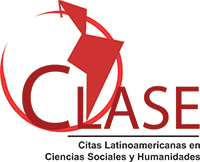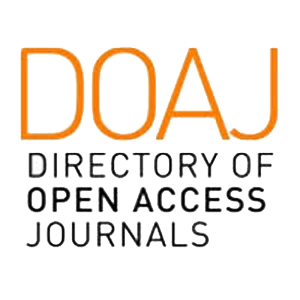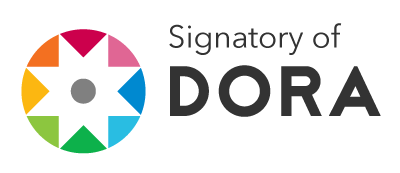Fuentes de financiamiento tradicionales y alternativas para la promoción de proyectos productivos en tiempos de crisis
Abstract
In the current context characterized by the post-pandemic era, plagued by uncertainty due to the war between Russia and Ukraine, where low growth rates and high inflation levels coexist, monetary authorities have proposed monetary policy actions, raising benchmark interest rates in order to alleviate the situation. However, such actions increase financing costs for new productive projects, so it is imperative to know the different financing alternatives, as well as to propose new mechanisms and instruments to obtain resources to promote economic activity. Thus, this article analyzes what a financial study is, what the capital structure is and describes the different "traditional" financing mechanisms, as well as the new strategies: loyalty programs, crowdfunding, leasing, Initial Coin Offering, Security Tokens Offering and Initial Exchange Offering.
Downloads
References
Adhami, S., Giudici, G., & Martinazzi, S. (2018). Why do businesses go crypto? An empirical analysis of initial coin offerings. Journal of Economics and Business, 100, 64-75.
Agudo, L. F., & Arceiz, F. J. L. (2013). Arrendamiento financiero: estudio jurídico-contable y aplicación práctica. Análisis financiero, (122), 80-89.
Agüero Cobo, L. (2014). Estrategia de fidelización de clientes.
Alber, N., & Youssef, I. (2020). Capital structure determinants: A cross-country analysis. International Business Research, 13(5).
Alcaide, J. C. (2015). Fidelización de clientes 2ª. ESIC editorial.
Altamirano, B. Y. G., Chuquipa, B. K. H., & Tafur, J. B. V. (2021). Gestión de capital de trabajo y la toma de decisiones en la empresa alba mayo SRL, Moyobamba-2021. Ciencia Latina Revista Científica Multidisciplinar, 5(6), 14931-14953.
Alves, P., Mayordomo, S., & Ruiz-García, M. (2022). La financiación empresarial en los mercados de renta fija: la contribución de la política monetaria a mitigar la barrera del tamaño (No. 2209). Banco de España.
Anson, M. (2021). Initial exchange offerings: The next evolution in cryptocurrencies. The Journal of Alternative Investments, 23(4), 110-121.
Antill, S., & Grenadier, S. R. (2019). Optimal capital structure and bankruptcy choice: Dynamic bargaining versus liquidation. Journal of Financial Economics, 133(1), 198-224.
Bagheri, A., Chitsazan, H., & Ebrahimi, A. (2019). Crowdfunding motivations: A focus on donors' perspectives. Technological Forecasting and Social Change, 146, 218-232.
Bayus, B. L. (2013). Crowdsourcing new product ideas over time: An analysis of the Dell IdeaStorm community. Management science, 59(1), 226-244.
Bednarz, Z. (2020). La representación de acciones en forma de tokens en la blockchain. Revista de derecho del mercado de valores, (26), 9.
Binance Academy (2017) Glossary/ Initial Exchange Offering
BMV (2018) ¿Cómo participar en la bolsa? https://www.bmv.com.mx/es/grupo-bmv/como-participar-en-la-bolsa
Bourjade, S., Huc, R., & Muller-Vibes, C. (2017). Leasing and profitability: Empirical evidence from the airline industry. Transportation Research Part A: Policy and Practice, 97, 30–46.
Butticè, V., & Vismara, S. (2022). Inclusive digital finance: the industry of equity crowdfunding. The Journal of Technology Transfer, 47(4), 1224-1241.
Cai, W., Polzin, F., & Stam, E. (2021). Crowdfunding and social capital: A systematic review using a dynamic perspective. Technological Forecasting and Social Change, 162, 120412.
Calvo, O., & Flores, A. (2016). Créditos de habilitación o avío y refaccionarios.
Chalmeta, B. T. (2022). Arrendamiento financiero: aspectos contractuales, registrales y concursales. Revista Crítica de Derecho Inmobiliario, 98(791), 1443-1492.
Chen, J. (2021). On the theoretical foundation of corporate finance. Structural Change and Economic Dynamics, 59, 256-262.
Chinche, E. R. L. (2020). Fuentes de financiación para la Estructura Financiera de la Empresa Cooperativa. Investigación Académica, 1(1), 45-56.
Chohan, U. W. (2017). Initial coin offerings (ICOs): Risks, regulation, and accountability.
Cotler, P. (2015). Crédito de proveedores, tamaño de empresa e informalidad. El trimestre económico, 82(327), 559-582.
Crosser, N. (2018). Initial Coin Offerings as Investment Contracts: Are Blockchain Utility Tokens Securities. U. Kan. L. Rev., 67, 379.
de las Heras Ballell, R. (2013). El crowdfunding: una forma de financiación colectiva, colaborativa y participativa de proyectos. Revista Pensar en Derecho. Nº3, 2, 101-123.
DuPont, Q. (2017). Experiments in algorithmic governance: A history and ethnography of “The DAO,” a failed decentralized autonomous organization. In Bitcoin and Beyond (Open Access) (pp. 157-177). Routledge.
Echeverri-Castaño, C. A., Escobar-Ortega, J. E., & Vergara-Garavito, J. (2020). Determinantes de la estructura de capital en la industria química colombiana. Ecos de Economía, 24(51), 29-44.
Freedman, D., & Nutting, M. R. (2015). A brief history of crowdfunding. Including Rewards, Donation, Debt, and Equity Platforms in the USA.
Furnari, S. L. (2021). Trough equity crowdfunding evolution and involution: Initial coin offering and initial exchange offering. Lex Russica, (1 (170)), 101-117.
Galván Iñiguez, H. C. (2019). Efecto del escudo fiscal por depreciaciones de propiedades, planta y equipo en el impuesto a la renta de las sociedades de la provincia de PichinchaPeríodo 20152017 (Bachelor's thesis).
García Gómez, B. (2009). Los programas de fidelización de clientes en establecimientos detallistas. Un estudio de su eficacia.
Giglio, F. (2022). The Capital Structure through the Modigliani and Miller Model. International Business Research, 15(11), 1-11.
Góngora, J. P. (2012). La Bolsa Mexicana de Valores como opción de financiamiento.¿. Comercio exterior. México. Véase en: http://revistas.bancomext.gob.mx/rce/magazines/143/3/La_Bolsa_Mexicana_de_Valores.pdf
Grossman, A. M., & Grossman, S. D. (2010). Capitalizing lease payments. The CPA Journal, 80(5), 6.
Guercio, M. B., Briozzo, A. E., Vigier, H. P., & Martinez, L. B. (2020). La estructura financiera de las Empresas de Base Tecnológica. Revista Contabilidade & Finanças, 31, 444-457.
Guercio, M. B., Vigier, H. P., Briozzo, A. E., & Martínez, L. B. (2016). El financiamiento de las pymes del sector de software y servicios informáticos en Argentina.
Howe, J. (2008). Crowdsourcing: How the power of the crowd is driving the future of business. Random House.
http://metabase.uaem.mx:8080/bitstream/handle/123456789/1687/330_62.pdf?sequence=1&isAllowed=y
https://www.binance.vision/glossary/initial-exchange-offering
Kleemann, F., Voß, G. G., & Rieder, K. (2008). Un (der) paid innovators: The commercial utilization of consumer work through crowdsourcing. Science, technology & innovation studies, 4(1), 5-26.
Lambert, T., Liebau, D., & Roosenboom, P. (2021). Security token offerings. Small Business Economics, 1-27.
Lezama Ruiz, N., Villagómez Mendez, J., & Lezama Hernández, L. G. (2022). Reto de los intermediarios financieros rurales: caso del estado de Guerrero. Revista mexicana de ciencias agrícolas, 13(4), 651-660.
Luthra E. (2019) “A New Trend in Crypto Funding Campaigns Companies” https://cointelegraph.com/news/a-new-trend-in-crypto-funding-campaigns-companies-resorting-to-ieos
Luu, L., Chu, D. H., Olickel, H., Saxena, P., & Hobor, A. (2016). Making smart contracts smarter. In Proceedings of the 2016 ACM SIGSAC conference on computer and communications security (pp. 254-269). ACM.
Machado, C., & Pereira, A. E. (2022). Optimal capital structure with stock market feedback. Review of Finance, rfac056.
Mascareñas, J. (2008). La estructura de capital óptima. Madrid: Universidad Complutense de Madrid.
Mavila, D. (2003). Leasing financiero. Industrial Data, 6(1), 86-88.
Milanesi, G. S. (2016). El arrendamiento financiero y valuación de opciones reales. Contaduría y administración, 61(2), 353-373.
Miranda, M. I. (2021). El impacto del arrendamiento financiero en panamá. Revista Saberes APUDEP, 4(1), 34-54.
Mitra R., (2018) What are Security Tokens? Blockgeeks. https://blockgeeks.com/guides/security-tokens/
Modigliani, F., & Miller, M. H. (1958). The cost of capital, corporation finance and the theory of investment. The American, 1, 3.
Momtaz, P. P. (2019). Token sales and initial coin offerings: introduction. The Journal of Alternative Investments, 21(4), 7-12.
Momtaz, P. P., Rennertseder, K., & Schröder, H. (2019). Token Offerings: A Revolution in Corporate Finance?. Available at SSRN 3346964.
Mora-Torres, C. J. (2017). Las fuentes de financiamiento a corto plazo como estrategia para el incremento de la productividad empresarial en las PYMEs. Domino de las Ciencias, 3, 338-351.
Moreno, M. J. A., Mora, Q. G. N., y Parrales P. M. L. (2022). Microcréditos en la Mipymes: oportunidad o limitante en su crecimiento empresarial. UNESUM-Ciencias. Revista Científica Multidisciplinaria. ISSN 2602-8166, 6(2), 169-192.
Moritz, A., Block, J., & Lutz, E. (2015). Investor communication in equity-based crowdfunding: a qualitative-empirical study. Qualitative Research in Financial Markets, 7(3), 309-342.
Mosquera Sevilla, A., & Cabezas Lozano, C. A. (2021). El efecto escudo fiscal como determinante de la estructura de capital y la generación de valor: un análisis empírico para el mercado colombiano (The Fiscal Shield Effect as a Determinant of the Capital Structure and the Generation of Value: An Empirical Analysis for the Colombian Market). Apuntes Contables, (28).
Mulder, N., & Pellandra, A. (2017). La innovación exportadora en las pequeñas y medianas empresas: programas de apoyo y financiamiento en América Latina (No. 138). Naciones Unidas Comisión Económica para América Latina y el Caribe (CEPAL).
Ozcáriz M., F. (2000). Garantías del constructor: el crédito refaccionario: reseña. Revista Jurídica de Navarra. Julio-diciembre 2000. Nº 30, pp. 540-543.
Paputsachis, P., & Wilma, I. (2016). El Leasing Financiero un medio para mejorar los resultados de la industria. Fides et Ratio-Revista de Difusión cultural y científica de la Universidad La Salle en Bolivia, 11(11), 139-154.
Parrondo, L. (2021). Finanzas Descentralizadas, beneficios y riesgos. Revista Técnica Contable y Financiera.
Paz Sime, M. A. (2017) El “Cofinanciamiento” de las APP: Concepto, Naturaleza, Evolución y Experiencias. Revista Derecho y Sociedad, N° 49 / pp. 339-358
Peujio Fozap, F. M., & Domínguez Blancas, C. S. (2019). Los procesos de inversión en activos como determinantes de la estructura financiera de las grandes empresas mexicanas, 2000-2016: Un enfoque por sectores. Análisis económico, 34(85), 9-31.
Pokharel, P. R. (2023). Capital Structure Determinants: Nepalese Evidence. Available at SSRN 4318437.
Schwienbacher, A., & Larralde, B. (2012). Alternative types of entrepreneurial finance. In The Oxford Handbook of Entrepreneurial Finance.
Stein, E. H., & Wagner, R. A. (2019). El desarrollo del capital de riesgo en América Latina y el Caribe: una perspectiva comparada. Revista Cepal.
Sudiyatno, B., Nugroho, S., Susilawati, Y., & Nurhayati, I. (2019, July). Determinants of capital structure. In International Conference on Banking, Accounting, Management, and Economics (ICOBAME 2018) (pp. 62-65). Atlantis Press.
Tiwari, M., Gepp, A., & Kumar, K. (2020). The future of raising finance-a new opportunity to commit fraud: a review of initial coin offering (ICOs) scams. Crime, Law and Social Change, 73, 417-441.
Torres Núñez, L. A. (2017). Los créditos Quirografarios a corto plazo y su incidencia en los indicadores de liquidez en la Cooperativa de Ahorro y Crédito de Indígenas de Ecuador de la ciudad de Ambato otorgados en el primer semestre del año 2015 (Bachelor's thesis, Universidad Técnica de Ambato. Facultad de Contabilidad y Auditoría. Carrera Contabilidad y Auditoría).
Valbuena R., ( 2006). Guía de proyectos formulación y evaluación. Machi Grupo Editor de México.
Vera Ortiz, J. G. (2021). FUENTES DE FINANCIAMIENTOS Y CRECIMIENTO EMPRESARIAL: CASO EMPRESAS MANUFACTURERAS, CANTÓN QUININDÉ (Bachelor's thesis, Jipijapa. UNESUM).
Copyright (c) 2024 Denarius

This work is licensed under a Creative Commons Attribution-NonCommercial-ShareAlike 4.0 International License.














